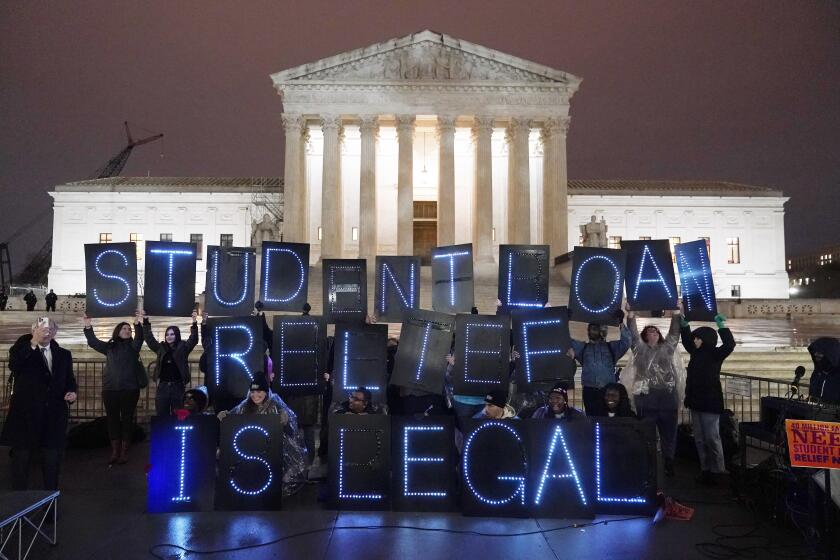Campus Correspondent : Increase, Don’t Cut Federal Student Loans
The proposed cuts in federal student loans are the latest indicators that government views education not as an investment, but as a necessary evil.
The United States stands to lose a lot for an estimated $5 billion to $10 billion in savings. The reductions in student aid will drain the economic resources of a generation of emerging graduates, fuel the growing gap between economic classes and cast doubt on America’s commitment to equality of opportunity.
More than one-third of the nation’s 13 million undergraduate students receive some form of financial aid from the federal government, according to the Department of Education. Last year, the total was $34 billion. Students, on average, rack up a four-year debt of $7,979 owed to the federal government, but it can go as high as $15,000.
The congressional reconciliation bill would reduce the direct-lending program by 90%, which over the last three years has decreased the cost of private-sector loan contracts by 30%, according to the American Council on Education. Meanwhile, the House appropriations bill would force 290,000 students out of the Pell grant program, which helps fund those who demonstrate exceptional financial need. It would also reduce or eliminate campus-based aid, state financial-aid programs and graduate scholarships, at a savings of about $2 billion. This relatively minor saving in government spending translates into higher debt for students.
As debts increase, students might be forced to abandon jobs essential to society but traditionally low-paying: teaching, social work and public health. They may be less able to invest, have less to save or less to spend.
All this assumes that expenses (including spiraling tuition fees) do not make college cost-prohibitive. A Brookings Institution report, however, underscores an alarming trend also detected in many other studies: students from lower-income families, approximately one-third of all students, are being economically pushed out of four-year universities into two-year or trade schools. The study found that a $100 rise in university costs can precipitate as much as a 2% reduction in enrollment.
The stakes are indeed high. The mean 1992 income of a bachelor-degree holder was $32,629, that of a high school graduate, $18,737, and that of an associate-degree holder, $24,398, based on data from the Census Bureau. These disparities are widening every year.
This situation becomes even more somber when the changing nature of the U.S. economy is factored in. Industries that chiefly rely on college-educated workers, like professional services and high technology, now outnumber those that do not. One result: Even as the economy has strengthened, the income disparity between the educated and undereducated has grown.
The inability to attend institutions other than community or vocational colleges makes matters ever more frustrating for lower-income students. It is a classic “Catch-22”: the only way to break out is to get a good education, but that is out of reach unless the money is there.
America has always held out the promise that an individual has a chance of making it big. Education is where it starts, and money spent on it will be returned in due time.
Congress should not be cutting back on financial aid; it should be increasing it. Even doubling assistance to students would only represent a minuscule 2% of the federal budget--a phenomenally small figure considering that the future of the nation is vested in it.
More to Read
Sign up for Essential California
The most important California stories and recommendations in your inbox every morning.
You may occasionally receive promotional content from the Los Angeles Times.






